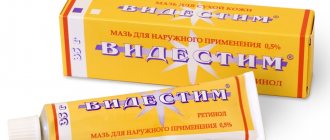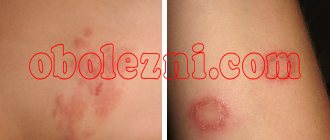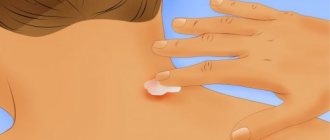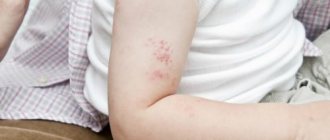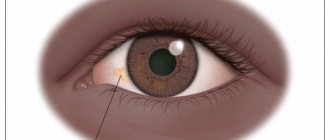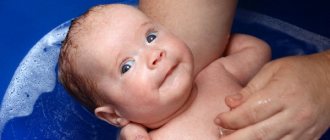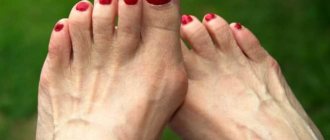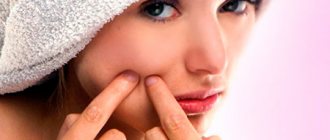Very often one has to forget about the pleasant opportunity to try on beautiful dress shoes. And a common reason for the need to make such a decision is the formation of a growth or bump on the legs.
This unpleasant symptom requires mandatory consultation with a specialist and qualified professional treatment. Primarily due to the possibility of serious impairment of motor mobility.
A lump or growth on the leg as a symptom of the disease
A lump or growth on the leg forms under the skin. In most cases, its appearance becomes the basis for consultation with an orthopedist or other specialist for treatment. They can form in different parts of the leg, be soft and hard, there can be many of them at once or only one, and they differ in different sizes.
Often, at the initial stage, the patient simply does not pay serious attention to the defect that has appeared and does not know that treatment is required.
Without treatment, this leg deformity begins to:
- increase in size;
- start to get very sick;
- become inflamed with noticeable redness.
This pathology can be benign or malignant. They may be accompanied by ulcerative inflammation. The simplest reason for a quick visit to the clinic is the deterioration in the appearance of the legs, which is eliminated by treatment.
Hygroma (ganglion) on the toe
Methods of treatment and removal of calluses
How to get rid of calluses on your toes? Modern medicine has several removal methods.
Laser removal
Laser therapy involves the use of an erbium or carbon dioxide laser.
In the first case, skin growths are removed by evaporation, in the second, keratinized tissue is removed layer by layer using the coagulation method.
Two types of installations are used:
- fractional device, when the laser affects the callus not with a single beam, but with several beams;
- non-fractional device, when a single powerful laser beam eliminates pathology layer by layer.
Regardless of the type of installation used, the essence of the laser therapy method is to heat the skin surfaces with subsequent evaporation of pathological cells. At the same time, pathogenic bacteria are destroyed and blood vessels are cauterized to avoid complications.
Laser therapy allows you to get rid of callus without causing harm to nearby tissues.
Cryodestruction
How to remove a callus this way? The technique involves burning calluses on the toes with liquid nitrogen. To apply the liquid, special equipment or an applicator is used.
In any case, the installation consists of a vessel for liquid nitrogen and tips of various diameters to ensure precision in influencing the pathology.
During cryodestruction, the product is applied to the skin growth in several stages, each of which lasts no more than half a minute. The whole operation takes about one and a half minutes.
After the procedure, a small wound remains at the site of the callus, which is then recommended to be protected with a band-aid when wearing shoes to avoid relapse.
Types and signs of bumps on the legs
A variety of types of diseases with different treatment methods lead to the appearance of this defect.
Bumps on the toes
When hormonal levels and metabolism are disrupted, the patient is affected by gout:
Manifestation of gout on the leg
- It leads to the rapid onset of deposition of uric acid salts in the joints . In such a situation, a very noticeable swelling forms at the site where the lump forms.
- Redness appears, the skin becomes shiny, and the temperature may rise.
- The patient experiences constant weakness. Red bumps called tophi form under the skin during the chronic stage of this disease. They can appear not only on the legs, but also on any other part of the body.
- During exacerbations, the bumps become soft. In steel, remissions have a solid structure. Treatment relieves symptoms.
Papilloma-like formations also often appear on the toes, which may be caused by a viral infection.
Bump on the knee
Inflammation in the joint bursae leads to bursitis:
- At the site of the lesion, a soft and at the same time elastic ball is formed under the skin, which requires the start of treatment. There is constant pain and body temperature.
- The development of a lump occurs in the presence of constant acute inflammation.
- Arthritis or a fistula may develop at the site of the lesion.
Development of knee bursitis
Also, the cause of a lump on the knee can be rheumatoid arthritis, hygroma, Baker's cyst.
Varicose veins on the lower leg
Bumps on the legs can form due to varicose veins. Their cause is constant inflammation of the veins.
At first, the veins simply swell; as the disease progresses, hard venous lumps or red nodes form. At this stage, treatment can even only be surgical in a hospital setting.
Vein diseases
Lump on the foot near the big toe
Another common cause is hallux valgus:
- A ball or bone forms on the inside of the foot near the joint of the affected toe.
- Large bumps on the feet form at the joint of the big toe.
- Without treatment, such a lesion impairs motor activity.
Cyst on the leg
Another reason for the formation of a lump on the leg is a subcutaneous cyst. It may be filled with pus and requires urgent treatment. When palpated, it appears as a small ball of medium density.
The cause of formation is blockage of the sebaceous glands, infection, or entry of a foreign body.
Cyst on the leg
Purple growths
An additional reason for the appearance of bumps on the legs is subcutaneous dermatofibroma. It consists of red or purple growths, the size of which varies from 0.3 to 0.6 mm.
The reasons for its formation are unknown. Complex treatment is indicated to relieve symptoms.
Lump on shin
A lump on the lower leg or calf can form as a result of a lipoma:
- These are soft and elastic balls. They grow slowly and do not cause harm to health.
- They can be up to 5 centimeters in diameter and can be grouped or solitary.
- If the lipoma presses on the nerve endings, pain occurs.
- It is important to start treatment at the earliest stages.
Lump on shin
Lump due to enlarged lymph nodes
Enlarged lymph nodes also appear as an unpleasant defect. These foot bumps are located on the sole or back of the foot. Weakness may occur and body temperature may rise. Progresses without treatment.
Lump on the foot
The official medical name for a lump on the foot is plantar or plantar fasciitis:
- The cause of formation is inflammation of the ligaments, muscles and tendons in the heel area.
- As it develops, bone osteophytes (growths on the heel bone) appear. They are bone spikes that cut into the soft tissues of the foot.
- Sharp pain appears due to emerging deformation. Requires treatment from a specialist.
Bumps or growths on the back of the heels
A common reason for contacting a specialist is the formation of bumps on the heels:
- Their cause may be Haglund's deformity and the growth of old, dry, rough callus.
- When a callus appears, the old skin grows and hardens.
- For such reasons, an osteophyte appears just above the insertion of the Achilles tendon on the heel bone.
- Causes severe pain, which literally forces you to urgently look for treatment options.
Halgund deformity
Causes of bunions on the leg
If any type of lump occurs on your leg, you must consult a doctor who will prescribe a treatment option. Such neoplasms do not go away on their own and, as they develop, can cause a significant deterioration in the quality of life.
The most common reasons are discussed in the table:
| Type of disease | Causes |
| Gout | Metabolism and hormonal imbalance, which leads to the accumulation of uric acid in the joints. |
| Lump on shin | Pathologies of the endocrine system, hereditary predisposition, varicose veins, lipoma and other diseases. |
| Bump on big toe | Valgus deformity of the toe joints. A common cause of this is wearing uncomfortable shoes for a long time. Including stiletto heels. |
| Bump on the heel | Habitual callus, heel spur. Appears as a result of chronic inflammation. |
| Bump on the foot | The most common cause of formation is a heel spur. |
How to get rid of it using folk and pharmacy remedies?
If a callus appears on your toe, what should you do? Effective ointments against calluses:
- “Super Antimozolin” is a product based on lactic acid and urea, which help soften dead skin.
The affected area is treated with the drug and temporarily sealed with a band-aid.
After two hours, the callus is very carefully rubbed with pumice.
The procedures are repeated every day until the growth completely disappears. The average duration of treatment is two weeks. Salicylic (10 percent) ointment is recommended for use before bedtime.
The callus is treated with a product, and a sock is put on top of the foot for the whole night.
In the morning, you can try to remove the softened skin formation. "Bensalitin" is a drug based on benzoic acid, which has an antiseptic and softening effect on the problem area.
Before application, steam the skin thoroughly. The ointment is kept for two hours.
- "Mosoil" is an ointment that is also characterized by effective action.
- the “Compid” patch is characterized by preventive and therapeutic effects, and perfectly resists ingrown formations;
- "Salipod" is an effective remedy against dry growths;
- patches that combat wet calluses have analgesic, anti-inflammatory, disinfectant, and preventive effects;
- Protective gel Velcro is used when wearing shoes.
How to remove calluses on feet and toes using plasters? The following patches can be used effectively:
How to remove a callus on your toe using folk remedies? Proven recipes will help you:
- onion.
Peel the onion, cut off a small piece and apply it to the callus overnight, securing it with a bandage or plaster.
In the morning, remove the softened skin layer. Vinegar and onion. First, soak a piece of onion in vinegar for a day.
Use the onion for its intended purpose (similar to the previous case) twice within two days. Aloe.
Cut, wash thoroughly and cut the plant leaf in half.
Apply the pulp to the roughened area and secure it while you sleep at night.
In the morning, use a pumice stone to get rid of the annoying growth. Lemon.
Citrus has a similar effect to aloe.
The fruit is also used.
You can use a piece of peel or a paste of pulp or zest. Potato.
Peel the potatoes, wash them thoroughly, and chop them to make a paste.
Apply a thick layer of the product to the affected area and fix overnight.
After removing the callus in the morning, treat the area with cream. Propolis. It is enough to fix it in place of the skin growth and not touch it for two days.
After the allotted time, the callus on the fingertip should resolve. Oak bark.
A decoction is prepared using oak bark (proportions 1:5).
A piece of gauze or bandage is soaked in the liquid, which is fixed to the callus and is not removed all night.
How to quickly cure a callus on your toe at home - folk remedies, more details in the video below:
Diagnostics
A neoplasm in the form of a lump on the leg can form due to a wide variety of diseases. At the first stage, you need to contact your primary care physician. The attending physician will refer you for further examination to an orthopedist and surgeon.
To confirm the diagnosis, you will need to perform the following studies:
- Computed tomography (CT).
- Magnetic resonance imaging (MRI).
- Ultrasonography.
- If necessary, an X-ray examination is performed.
Such a complex will allow a specialist to accurately determine the cause of the pathology, which will help develop an individual treatment package for a bunion on the leg for each patient.
Treatment for a bunion on the big toe
The appearance of a bunion on the big toe is caused by a large number of factors, from hereditary predisposition to constant wearing of uncomfortable designer shoes. Treatment of this unpleasant and painful defect is carried out in a hospital setting and then continues at home.
A well-thought-out course of therapy helps to get rid of the tumor completely. True, such a positive course of the disease is possible if you consult a doctor in a timely manner in the early stages. But even at significant stages of the disease, the growth of formation is stopped, and the disease often goes into a stage of stable and long-term remission.
Drug treatment
Only an experienced specialist should determine the optimal treatment option. During the initial consultation, the physician collects the patient's medical history.
This will allow us to determine the optimal treatments that will be indicated and will not cause negative interactions with other medications and procedures that are carried out simultaneously in some patients due to the presence of other diagnoses.
When treating a formation on the leg in the area of the big toe, medications such as non-steroidal anti-inflammatory drugs are used:
- Diclofenac.
- Movalis.
- Ibuprofen.
Diclofenac
Movalis is the latest generation drug
Ibuprofen ointment
The following steroid drugs can also be used:
- Prednisolone.
- Metipred.
- Diprospan.
- Hydrocortisone.
Metipred
Prednisolone ointment
Hydrocortisone for external use
Diprospan
Exercises
Exercises to treat bunions in the toe area help improve mobility.
Can be performed even at work:
- Pick up small objects from the floor with your toes.
- Move your feet forward and backward using only the movements of your toes.
- When performing the “fan”, the toes are spread to the maximum distance.
- Bring your toes closer to your feet and straighten them, relaxing the muscles.
- While standing, rise on your toes to the maximum height.
Exercises to treat bunions
Orthopedic products and plasters
The use of valgus toe braces is recommended. They can be prefabricated or dismountable. The use of such products helps to fix the correct position of the toes, which reduces bunions and relieves pain.
At the same time, in complex therapy, patches are used that activate blood flow to the diseased area. Such as bee and snake venom patches.
Special orthopedic devices for correction
Types of folk remedies
At home, to enhance the effect of complex therapy, the following is used:
- Applying a mesh to the affected area using iodine. The mesh is applied with a cotton sponge. Can be applied at night.
- Iodine can be mixed with a few drops of aspirin ground into dust in a mortar. 3-4 tablets are enough.
- Bathe pharmaceutical bile and apply to the affected area. This compress is performed several times a day. Including at night.
- A salt bath relieves inflammation well. To prepare it, table or sea salt is dissolved in a high concentration of warm water. Place your feet in the bath for 15 minutes. Do it 2-3 times a day.
- Baths can be prepared using soda . In such a situation, soda can be used on its own, or mixed with salt and iodine.
- Sore fingers can be wrapped in foil at night. This compress is warming and helps relieve inflammation.
Fish has been successfully used in therapy. It is possible to use both fresh and frozen. Preference should be given to river species. To make a compress, use a cold, but not frozen, carcass, which is simply applied to the diseased area for about 1 hour. After removing the compress, the location of the deformity is softened with sea buckthorn oil.
Surgical treatment of the thumb bone
In case of severe damage and pain, laser removal of a lump on the foot in the area of the big toe may be prescribed. The operation is performed under local anesthesia and is minimally traumatic.
Full recovery occurs within 5-7 days. It can be removed on an outpatient basis, without hospitalization.
Conservative treatment
For people who do not want to undergo surgery, a non-surgical treatment option is available. An attempt is being made to simply get rid of the inflammation of the mucous membrane. If the swelling in the fingers disappears, the sensations when walking change for the better. You can get rid of it using the simplest (but effective) method - applying ice. You can take ice cubes and make compresses. An easy option is to simply take a heating pad, pour cold water and apply it to the growth.
It is dangerous to be treated in this way without the careful supervision of a doctor, on your own. Such treatment can be harmful. When you go to the hospital, your doctor will recommend non-steroidal anti-inflammatory drugs to help prevent the painful situation from getting worse.
Be careful: you should not exceed the dosage, otherwise it will not take long before you feel unwell or overdose. If the pain is too strong, it is better to choose a drug with a strong effect, but making such a decision on your own is highly not recommended.
In some cases, patients are prescribed special therapeutic exercises individually or in groups. Physical education prevents the tendon from falling into the unpleasant stage of tenopathy.
It is recommended to walk in comfortable shoes with a soft back. In such shoes, the foot is soft and warm on all sides. Women will have to temporarily forget about heels; the elevations put stress on the spine and feet. It is better to exclude stilettos from your wardrobe. If you stick silicone patches to the bump, walking will become easier.
Rules for treating growths on the foot and heel
The treatment of cones on the foot and heel also requires the use of complex therapy. The treatment program is developed by the doctor. In most cases, removal of a formation in the heel area can be eliminated within several months with the help of massage and the use of compresses and rubbing.
Only with a strong increase in the formation can removal using a laser be used.
Medicines
Drug treatment is performed using a drug blockade.
Medicines prescribed by a doctor:
- Levomekol;
- Voltaren;
- Fastumgel;
- Indomethacin;
- Indovazin.
Levomekol
Voltaren gel
Fastum
Indovazin
Traditional methods of treating bumps on the foot and heel
Recipes for treating bunions on the foot or heel:
- The simplest treatment option is to apply a mesh of pure alcohol to the affected area several times a day. The mesh can be applied using iodine.
- Salt baths are useful. To prepare them, dissolve several tablespoons of table or sea salt in warm water. Baths are done twice a day.
- Applying a mesh of camphor oil , on top of which a mesh of iodine is applied, helps relieve inflammation.
- Shown are baths made from a decoction of potato peels. To prepare them, take the peel of 1 kg of potatoes, boiled in 2-3 liters of water.
Use of surgery
In case of severe pain and lack of effect with other types of treatment, surgery may be used. An effective way to get rid of bunions on the legs is to use a laser.
Treatment
For wet or watery calluses, the bladder is punctured to allow tissue fluid to drain out. The skin over the blister is not cut off; it covers the wound and protects against infection. The heel is treated with an antiseptic solution (for example, Chlorhexidine), a bactericidal patch is applied, or a bandage with ointment is applied.
With dry calluses, there is rough, thick skin that needs to be removed. First, steam the foot well, then use a pumice stone or a special pedicure grater to remove the rough skin. After the procedure, you can lubricate the surface of the heel with vegetable or olive oil. If it was not possible to eliminate the skin growth in one go, you can repeat the procedure.
The use of Anti-callus ointment, the active ingredients of which are lactic and salicylic acids, is considered effective. This is a classic keratolytic agent that helps remove the layer of keratinized epidermis. When used correctly, it successfully eliminates dry calluses. The ointment is applied to the callus once a day, then waxed paper is placed, which is secured with a plaster or bandage. The external remedy should be used until the callus softens for several days, so that it can be easily removed using a pumice stone or a pedicure grater.
In the initial stages of development of Haglund's deformity (a bone growth on the heel bone), it is possible to use conservative therapy, which is aimed at eliminating pain and inflammation. Some useful tips:
- If there is an exacerbation, we wear shoes without backs.
- We use non-steroidal anti-inflammatory ointments or gels that will help reduce pain (Ibuprofen, Dolobene, etc.).
- It is possible to use anti-inflammatory drugs for oral administration (Ketanov, Nurofen).
- A positive effect is noted from physiotherapeutic procedures. Courses of laser therapy, magnetic therapy, and shock wave therapy will help.
- Some experts recommend wearing an ankle orthosis, which reduces the load and limits movement in the joint.
If wounds often appear in the area of the callus due to rubbing with shoes, this can lead to infection and the development of suppuration.
Treatment for bumps on the knee and shin
The cause of a lump on the leg in this area can be many diseases from varicose veins to bursitis. Depending on the diagnosed type of disease that caused the lump on the leg, a wide range of medications are used.
Depending on the diagnosis, they differ significantly. However, there are general methods.
Use of medications
To eliminate a bump on the leg in the area of the knee and shin, it is recommended to use analgesics to relieve pain, including:
- Nurofena.
- Catoprofen.
- Ibuprofen.
- Intomethacin.
Metipred
Indomethacin Ibuprofen ointment
Nurofen
Steroid medications, including Prednisolone and Metypred, will help relieve inflammation.
Orthopedic products
Knee and ankle orthoses are used to relieve pain and fix the position of the limb.
Elastic bandages are also shown. Their use is recommended, including for preventive purposes.
Traditional treatment
Considering the large number of diagnoses that cause the appearance of a lump on the leg in the area of the knee or lower leg, symptomatic alternative treatment is used:
- A decoction of lingonberry leaves helps reduce pain and inflammation.
- It is recommended to apply a compress of freshly squeezed lemon juice to swellings. For this purpose, a compress of cooked and grated raw potatoes is also used.
- Burdock leaf is also used. To enhance the anti-inflammatory effect, the leaf can be doused with boiling water before using as a compress.
Surgical exposure
This treatment option is prescribed only symptomatically:
- In the case of varicose veins, sclerotherapy and laser coagulation can be used.
- When it comes to damage to the knee or ankle joint , it is recommended to perform an operation to replace it, endoprosthetics.
- To reduce or remove the cyst that caused the appearance of a lump on the leg, a puncture can be used to remove the accumulated fluid or blood, the patient gets rid of pressure on the joint.
Treatment methods
Depending on the individual condition of a person and his legs, the attending physician prescribes the necessary diagnostics. The study is regulated depending on a number of factors. Options suggested by the health care professional are listed below:
- Electrophoresis;
- Wearing orthopedic insoles that distribute pressure on the heels;
- Shock waves (using a special device);
- Laser/ultrasonic radiation;
- Drug blockades (the method requires careful use; if administered incorrectly, it can cause heel necrosis). In this option, an injection is made into the toe or heel with a medicinal substance that blocks pain.
There are many methods, not all require surgical intervention. On the contrary: if the development of the callus has not yet reached its climax, the violation can be dealt with quickly and quite easily. The described methods meet modern standards, do not cause pain, and anyone can use them!
No one will forbid a person to turn to traditional medicine if the methods are discussed with the attending physician in advance. Folk remedies for dealing with calluses include simple foods: potatoes, oatmeal, honey, chicken eggs.
If during diagnosis cystoid formations are discovered in the foot, preparations are made for surgery; the abnormalities cannot be removed from the outside. The operation is performed under anesthesia, the incision is small, and the clinic usually covers the costs of rehabilitation.
Rules for treating a growth on a child’s heel
Warts and growths on the heel form in about 20% of children and adolescents.
They can be formed:
- In case of regular violation of hygiene standards.
- Wearing uncomfortable shoes.
- With a lack of fresh air and vitamins.
The disease rarely causes pathology in children. In any case, if a growth or bump appears on a child’s leg, you should immediately consult a doctor.
Antiseptic drugs such as Bleomycin and Podophyllin will help cure growths in children. The use of salicylic ointment and preparations made on its basis is recommended. Plasters may be applied.
Prevention options
Lumps on the legs form for many reasons and with many diseases.
To minimize the possible occurrence of pathologies, general principles of prevention can be used:
- Maintaining a healthy lifestyle.
- Normalization of body weight.
- Compulsory sports exercises.
- Long walks in the fresh air.
- To prevent the appearance of bumps on the legs as a result of joint damage, you can introduce foods rich in potassium and calcium into your diet.
An important condition for successful prevention is timely consultation with a doctor if any bumps appear on the legs. This will help identify the disease at the earliest stages and develop an individual course of treatment. When therapy is started early, the treatment of bunions on the legs is successful.
